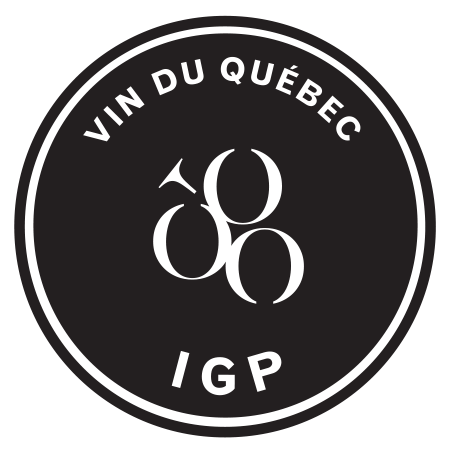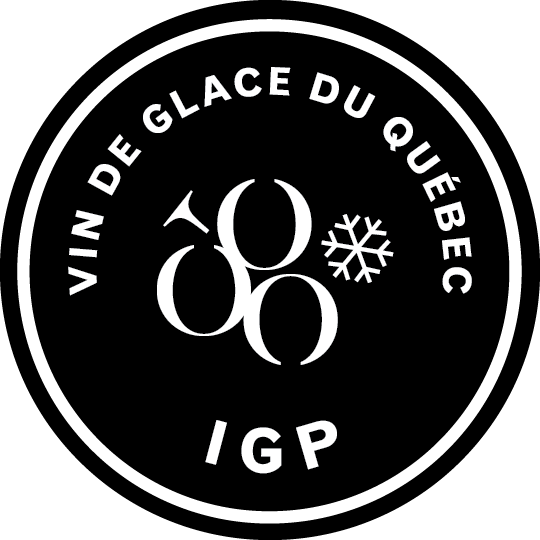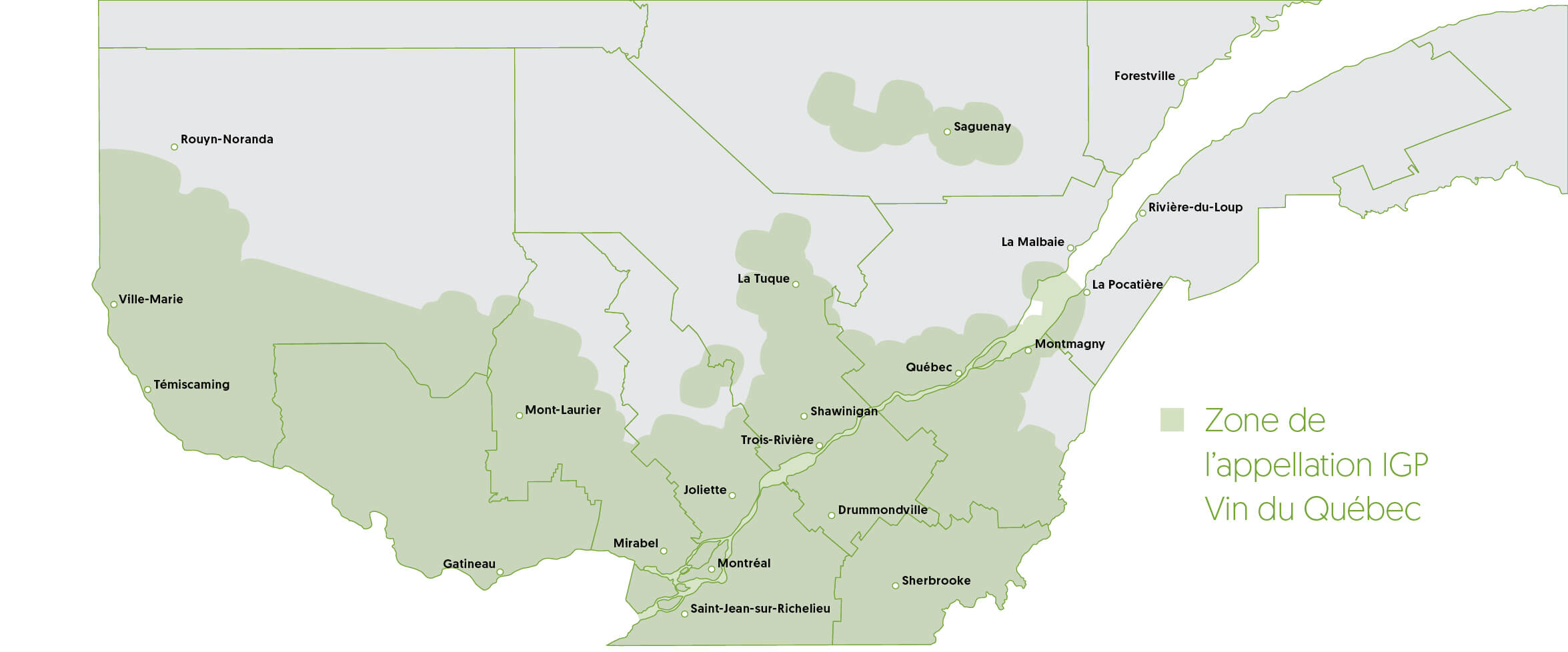
An authenticity to celebrate!
Did you know that Quebec has its own Protected Geographical Indication (PGI) to authenticate its wines? Winegrowers who market their wines under the PGI (IGP) Vin du Québec designation must comply with strict specifications. This specification provides, among other things, that the grapes must come from the protected geographical area – hence the PGI!
PGI QUEBEC WINE (IGP VIN DU QUÉBEC), quality control from field to bottle
Recognized in 2018 by the Ministry of Agriculture, Fisheries and Food of Quebec (MAPAQ), the PGI ensures the traceability and quality of wine. The products are checked at all stages of production, from growing the grapes to bottling.
PGI QUEBEC WINE: THE GEOGRAPHICAL ZONE
A Vin du Québec Protected Geographical Indication wine must be produced from 100% Quebec grapes, more specifically within the PGI geographic zone. It is bounded by the Laurentian mountain range to the north, by the border along the United States to the south, by Ontario to the west and by the Appalachians to the east.
To be eligible, the region where the vines are grown must have a minimum of 900 degree-days. The degree-day measurement is used to calculate the amount of heat available during the vine growing season.
Zoom on each of the stages of production of these wines that taste our terroir – authentically Quebec wines!
Step 1:
The cultivation of grapes
The PGI Qubec Wine is the only Canadian certification where control is exercised right down to the field. In fact, a PGI Vin du Québec wine must be produced from 100% grapes from the PGI geographic zone and from any hybrid grape variety, such as Frontenac Noir, Vidal or St-Pépin; or vitis vinifera, such as gamay or chardonnay, to name a few.
Step 2:
Winemaking
The specifications frame certain crucial steps related to winemaking, in order to ensure that the wine is produced in compliance with the best existing winemaking standards.
These rules, essential to the quality of the wine, set minimum thresholds to be respected, for example concerning the maturity of the grape before its harvest or the techniques used to adjust the degree of alcohol. In addition, the PGI Quebec Wine must imperatively be vinified in the vineyard.
Step 3:
Bottling and labeling
Like vinification, bottling and labeling of wines must be done in the vineyard to ensure traceability and comply with the IGP appellation. PGI Quebec Wine labels must contain certain information. In particular, it should read the name of the reserved designation “Vin du Québec” and the term “Protected Geographical Indication”.
Step 4:
Product analysis
Once the wine has been vinified and bottled, the last step to take is its analysis. This operation is carried out by an independent laboratory. The laboratory will analyze the alcohol content, the pH, the total and volatile acidity, as well as the residual sugar of the wine.
The wine will also undergo an organoleptic evaluation by an approval committee, made up of expert tasters who ensure that the wine is free from defects. The ultimate goal of this step: to eliminate wines that should not normally end up in the hands of consumers because they do not meet the required quality standards.
Step 5:
PGI certification
The PGI Quebec Wine is awarded to the wine and not to the vineyard. Each wine must go through the certification process, annually, vintage after vintage. The Council for Reserved Designations and Enhanced Terms (CARTV) is the body set up by the government to ensure the application in Quebec of the Act respecting reserved designations and enhanced terms. One of CARTV’s missions is to accredit the certification body responsible for the PGI Quebec Wine, Ecocert Canada, which ensures that the winegrowers follow the specifications. This double verification benefits the consumer by offering him a guarantee of the rigorous application of the standards in force.
A certification that tastes just as good… we would be crazy not to have it!
Finally, why choose an PGI Quebec wine?
Because the Protected Geographical Indication gives consumers the assurance that certified wines are made from 100% Quebec grapes, but also that they are free from defects. Traceability and quality are thus brought together in the bottle.

PGI ICE WINE FROM QUEBEC
Quebec also has its own IGP for Ice Wine! An IGP recognized in 2014 to designate a wine made exclusively from grapes grown within a defined geographical area, naturally frozen on the vine and picked by hand.
Quebec’s winter weather conditions are ideal for the production of ice wine. The cold, the wind, the low humidity of the air and the cycle of freezing and thawing cause the natural dehydration of the grape and allow the evaporation of the water of the fruit, which leads to a concentration of its sugars. This is what gives Icewine its characteristic taste and aroma.
In addition, grapes grown in Quebec are characterized by sustained acidity, also associated with the climate. The result: a 100% unique icewine with distinctive freshness and balance.



